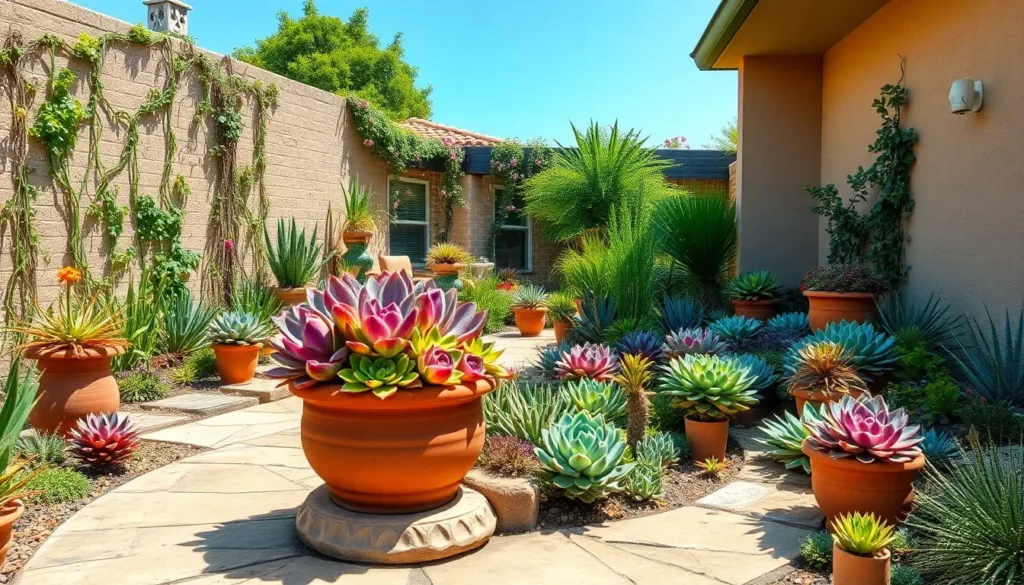Gardening is a journey filled with joy, creativity, and the satisfying crunch of fresh produce or the vibrant colors of blooming flowers. Whether you’re just getting your hands dirty for the first time or have years of experience nurturing your green space, “12 Essential Water-Saving Garden Ideas” is your ticket to a thriving, sustainable garden oasis.
In today’s world, being mindful of water usage is not just a trend—it’s a necessity. This guide offers a treasure trove of practical techniques that promise not only to conserve water but also to enhance the beauty and productivity of your garden, ensuring you reap the rewards of your labor while being kind to our planet.
Imagine the thrill of watching your garden flourish even in the driest conditions, feeling empowered by the knowledge that you’re doing your part for the environment. With these tried-and-true methods, you’ll gain confidence in your ability to create a garden that’s both water-wise and wonderfully rewarding.
Install Drip Irrigation Systems
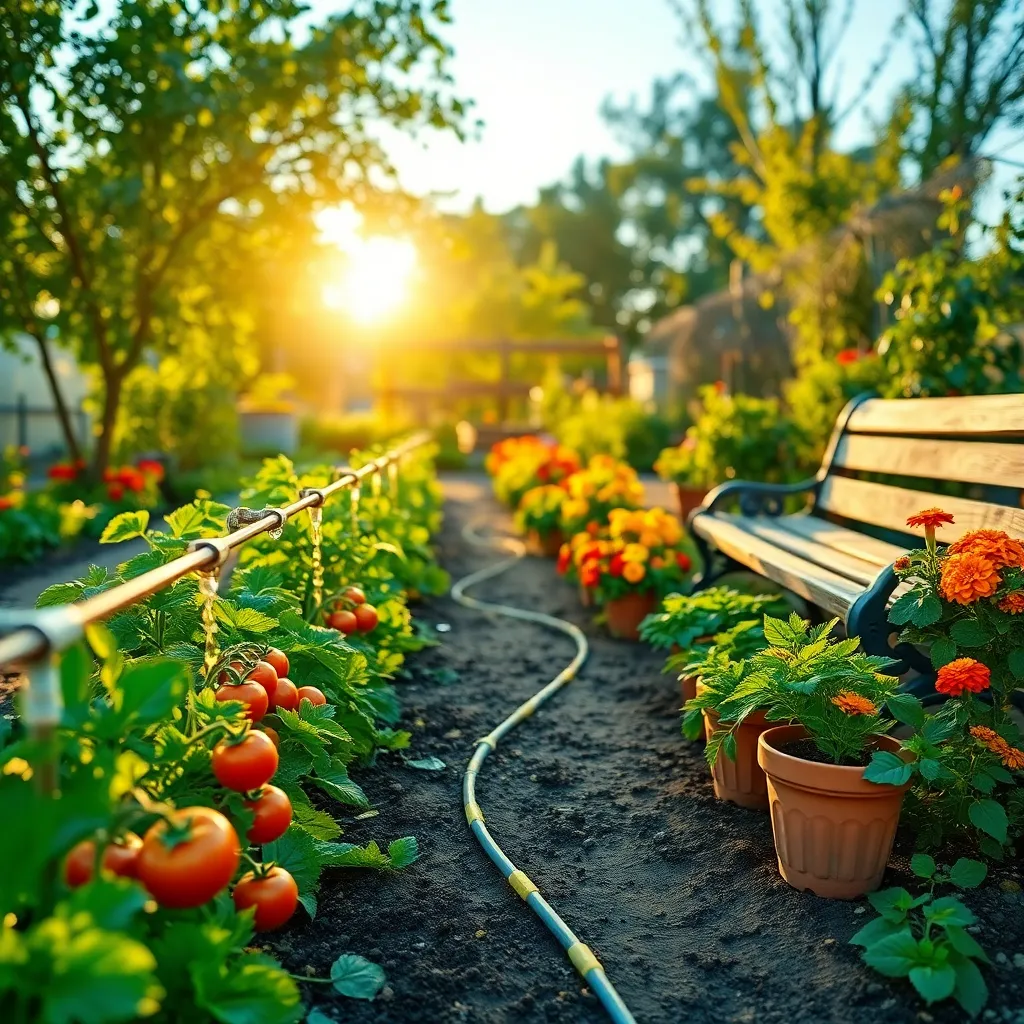
Drip irrigation systems are a fantastic way to conserve water while ensuring your plants receive the hydration they need. By delivering water directly to the root zone, these systems minimize evaporation and runoff, making them highly efficient for gardens of all sizes.
To get started, choose a drip irrigation kit that suits your garden size and layout. Kits generally include all necessary components like tubing, emitters, and connectors, allowing you to customize the setup to fit around plants and rows.
Begin by mapping out your garden and marking where each plant is located to determine the best placement for your system. This planning step ensures that each plant receives the right amount of water, reducing wastage.
Once installed, adjust the emitters to control water flow based on plant needs, which can vary significantly. For instance, cactus and succulents require less frequent watering compared to vegetables or flowers, so tailor the system accordingly.
Regularly check for clogs or leaks in the system to maintain efficiency and effectiveness. A well-maintained drip irrigation system not only saves water but also promotes healthier plant growth by providing consistent moisture levels.
Utilize Rainwater Harvesting Techniques

Collecting rainwater is a smart and sustainable way to water your garden, reducing dependency on municipal water supplies. You can start by setting up a rain barrel system, which is an easy and efficient way to capture rain from your roof.
Position your rain barrels under gutter downspouts to maximize water collection. Ensure your barrels have a mesh screen to keep debris and insects out, maintaining clean water for your plants.
Once you’ve collected rainwater, use it to water your garden during dry spells, focusing on deeply watering the root zones of your plants. This method encourages roots to grow deeper and more resilient, making your plants less dependent on frequent watering.
For more advanced gardeners, consider installing a gravity-fed drip irrigation system connected to your rain barrels. This setup allows for efficient water distribution directly to plant roots, conserving water and ensuring even moisture.
Choose Drought-Tolerant Plants
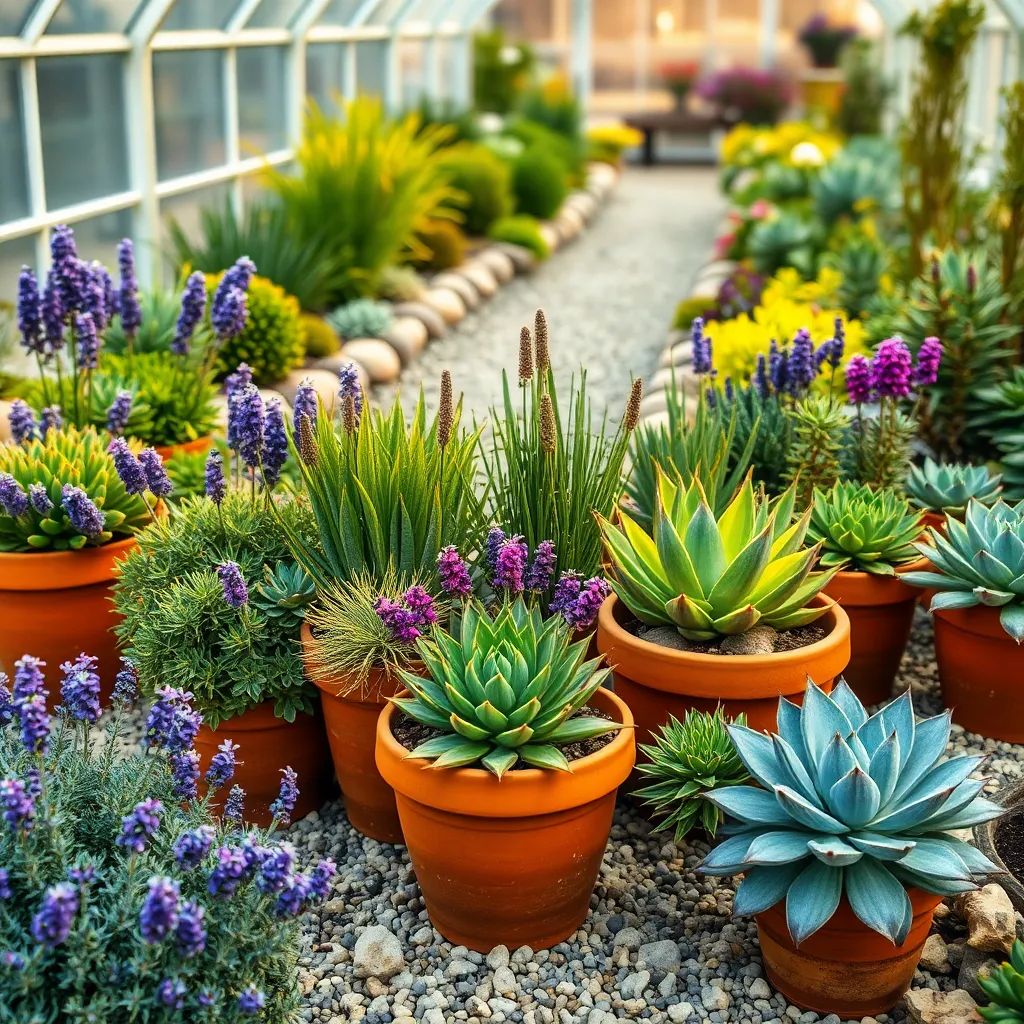
Opting for drought-tolerant plants is a smart strategy to conserve water in the garden. These plants have evolved to thrive with minimal watering, making them ideal for dry climates or water-restricted areas.
Consider species such as lavender, succulents, and yarrow, which are known for their resilience. Lavender not only adds fragrance but also attracts pollinators, while succulents provide unique textures and colors.
When planting drought-tolerant varieties, ensure the soil is well-draining to prevent root rot. Mixing in sand or fine gravel can enhance drainage, offering an ideal growing environment for these hardy plants.
Mulching is another effective technique to retain soil moisture and suppress weeds. Apply a two-inch layer of organic mulch around your plants to maintain consistent soil temperatures and reduce evaporation.
Apply Mulch to Retain Moisture
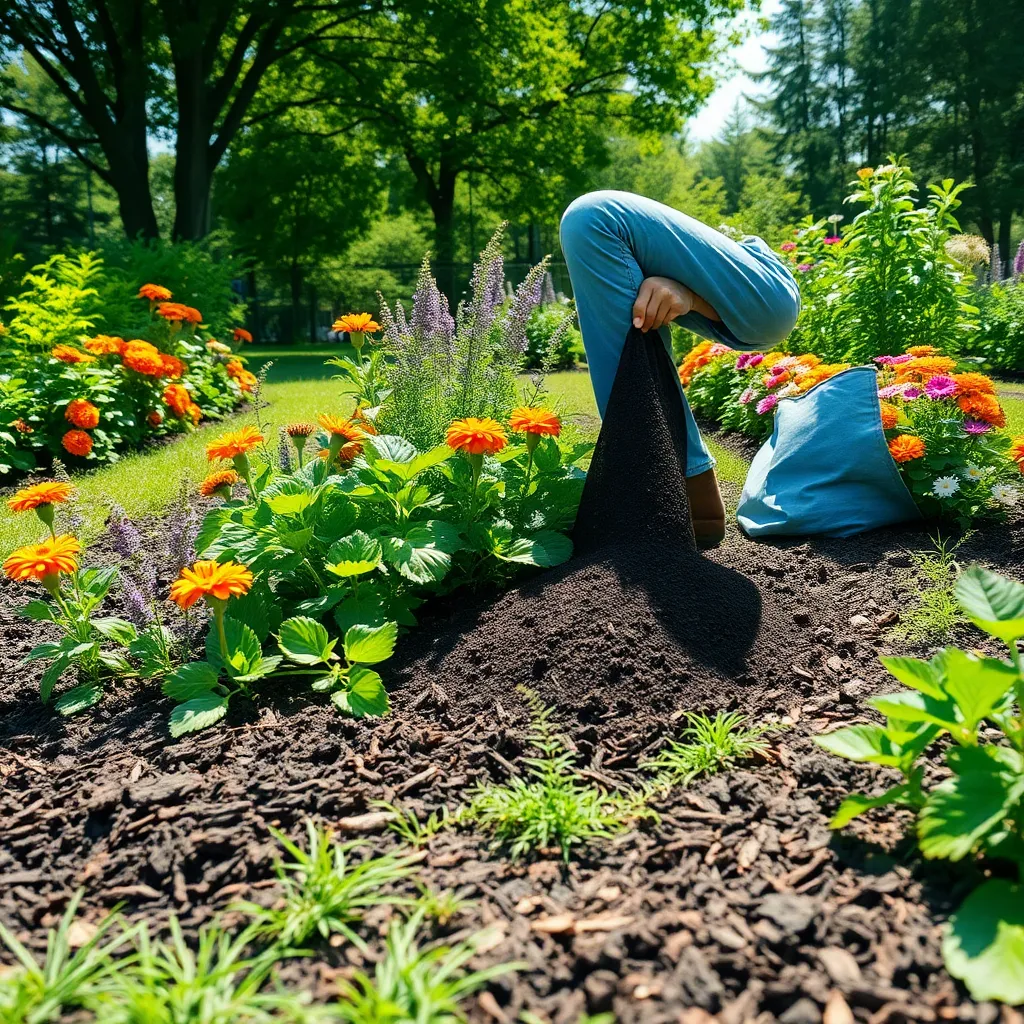
Applying mulch is a highly effective way to retain moisture in your garden, making it an essential practice for water conservation. Mulch acts as a protective barrier over the soil, reducing evaporation and keeping the soil cool.
Consider using organic mulches such as straw, wood chips, or shredded bark, which gradually decompose and enrich the soil. As these materials break down, they improve soil structure, enhancing its ability to retain moisture.
Spread a layer of mulch about 2 to 4 inches thick around your plants, making sure to keep it away from the stems to prevent rot. This layer helps suppress weeds that compete with your plants for water and nutrients.
For advanced gardeners, using a combination of mulch types can optimize moisture retention and soil health. Try using a base layer of compost under your mulch to further enrich the soil and enhance its moisture-holding capacity.
Water Plants in Early Morning
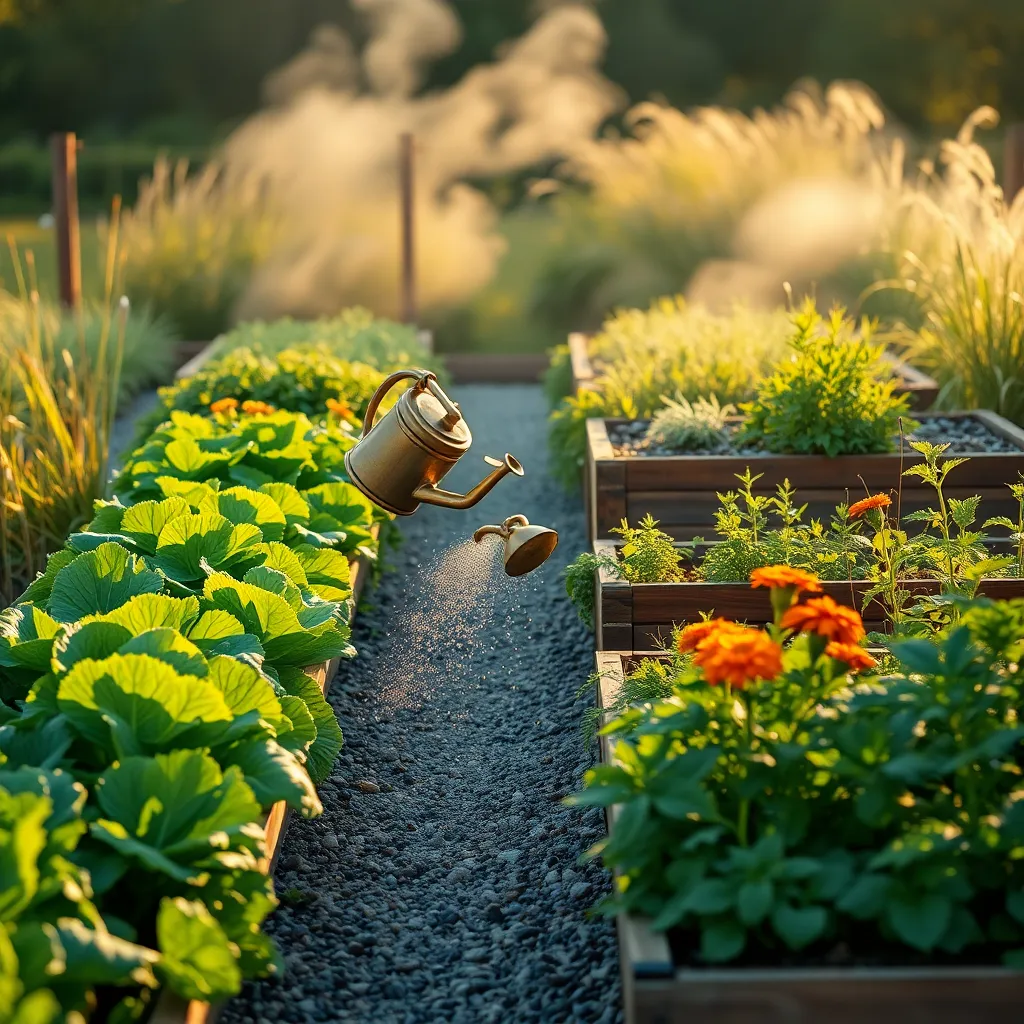
Watering your plants in the early morning is an effective way to conserve water and promote healthy growth. The cooler morning temperatures mean less evaporation, allowing more water to penetrate the soil and reach the roots.
By watering early, you also help prevent diseases that thrive in damp conditions, as leaves have time to dry before evening. This practice is especially beneficial for plants prone to fungal infections, such as tomatoes and roses.
Consider using a soaker hose or drip irrigation system to deliver water directly to the plant base. These methods are not only water-efficient but also reduce the risk of wetting foliage, which can lead to mold and mildew.
For advanced gardeners, incorporating a moisture meter can optimize your watering routine. Monitoring soil moisture levels ensures you’re not over- or under-watering, which is crucial for maintaining plant health and conserving water.
Group Plants by Water Needs

Grouping plants by their water needs is an effective strategy to conserve water in your garden. This technique not only simplifies watering routines but also ensures that each plant receives the appropriate amount of moisture it requires.
Start by assessing the water needs of your existing plants, categorizing them into three main groups: high, moderate, and low water needs. Plants like ferns and astilbes thrive with frequent watering, while Mediterranean herbs such as lavender and rosemary prefer drier conditions.
Once grouped, consider placing plants with similar needs together in your garden beds or containers. This prevents overwatering drought-tolerant species and underwatering those that crave moisture, creating a harmonious and water-efficient garden environment.
For advanced gardeners, integrating a drip irrigation system for each plant group can further enhance efficiency. By adjusting the water output based on the specific needs of each group, you ensure optimal hydration and reduce wastage.
Incorporate Native Plant Species
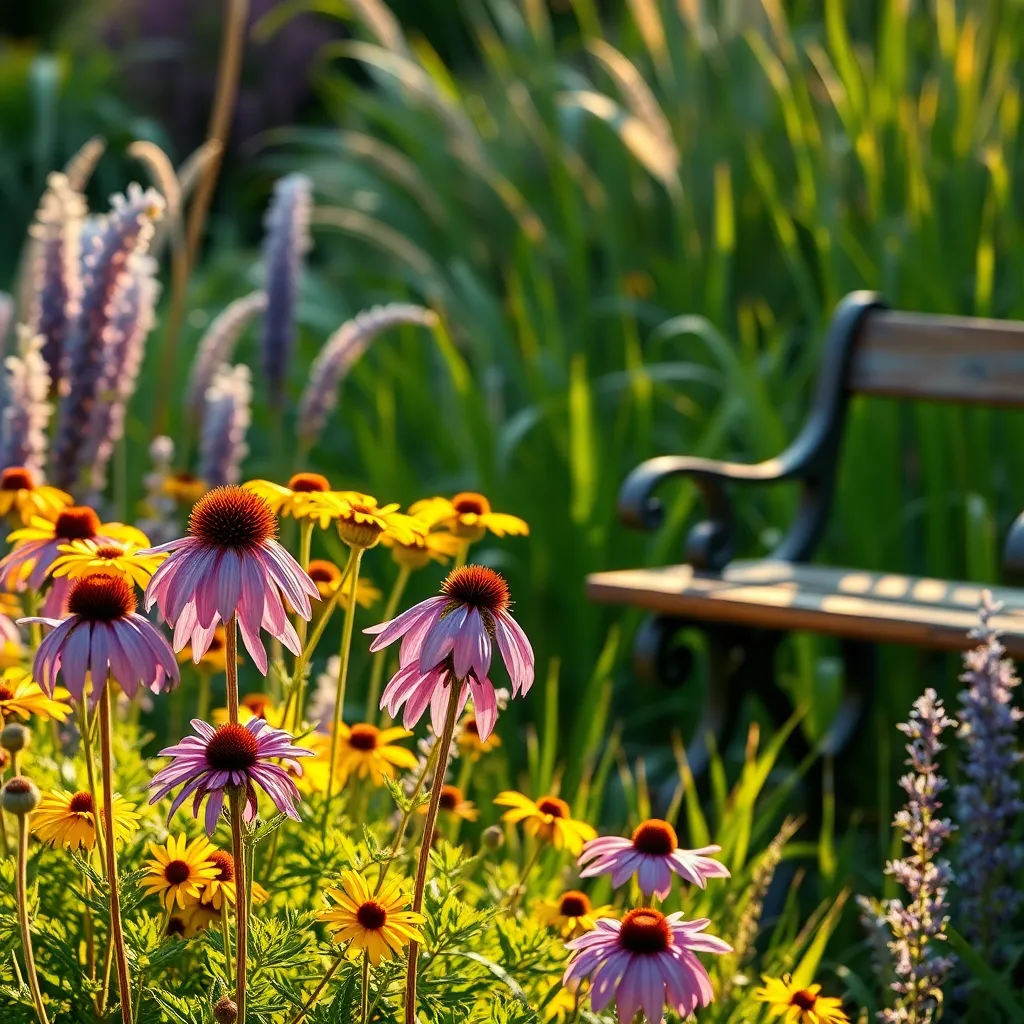
Incorporating native plant species into your garden is a powerful way to conserve water while enhancing your landscape’s resilience. Native plants are well adapted to your local climate, requiring less irrigation and maintenance once established.
Consider researching which native plants thrive in your region and their specific soil preferences. Generally, natives are suited to the local soil conditions, so they often require fewer soil amendments and fertilizers.
When planning your garden, mix a variety of native perennials, shrubs, and ground covers to create a diverse and sustainable ecosystem. This not only reduces water usage but also supports local wildlife, such as pollinators and birds.
For beginners, start with hardy natives like coneflowers, black-eyed Susans, or switchgrass, which are known for their drought tolerance. More experienced gardeners might explore integrating native grasses or flowering shrubs that offer seasonal color and texture.
Use Greywater for Irrigation
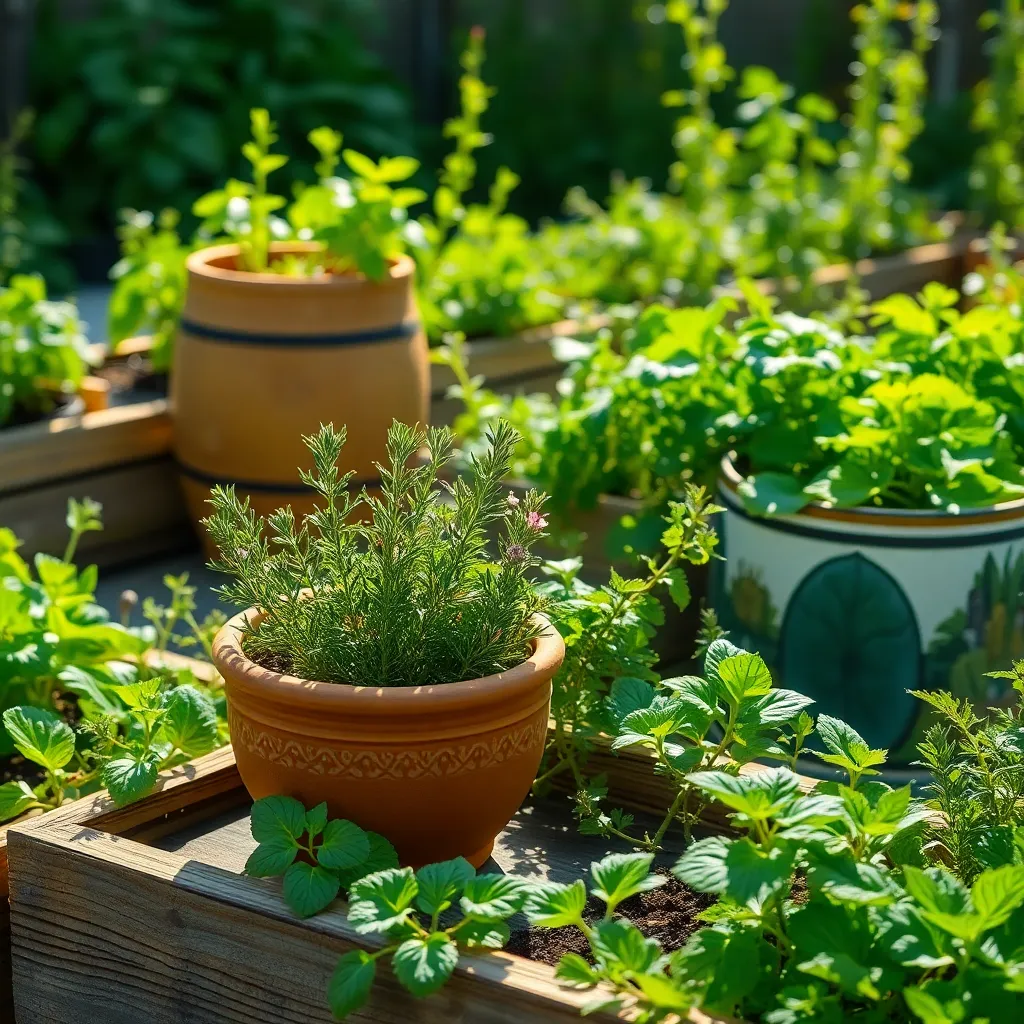
Reusing greywater for irrigation is an effective way to conserve water in your garden. Greywater is household wastewater from sources like sinks and showers that can be redirected to your garden with proper filtration.
Before using greywater, it’s essential to ensure that it is free from harmful chemicals like bleach or strong detergents. Opt for biodegradable and plant-friendly cleaning products to make your greywater safe for plants.
To distribute greywater effectively, consider setting up a simple gravity-fed system or using a pump to reach distant areas of your garden. Focus on watering non-edible plants such as ornamental shrubs and flowers, as greywater may not be suitable for edible crops.
For those interested in advanced techniques, installing a greywater system can be a worthwhile investment. Systems can be as simple as a DIY diversion kit or as complex as professionally installed systems with filtration and storage tanks.
Create Windbreaks to Reduce Evaporation
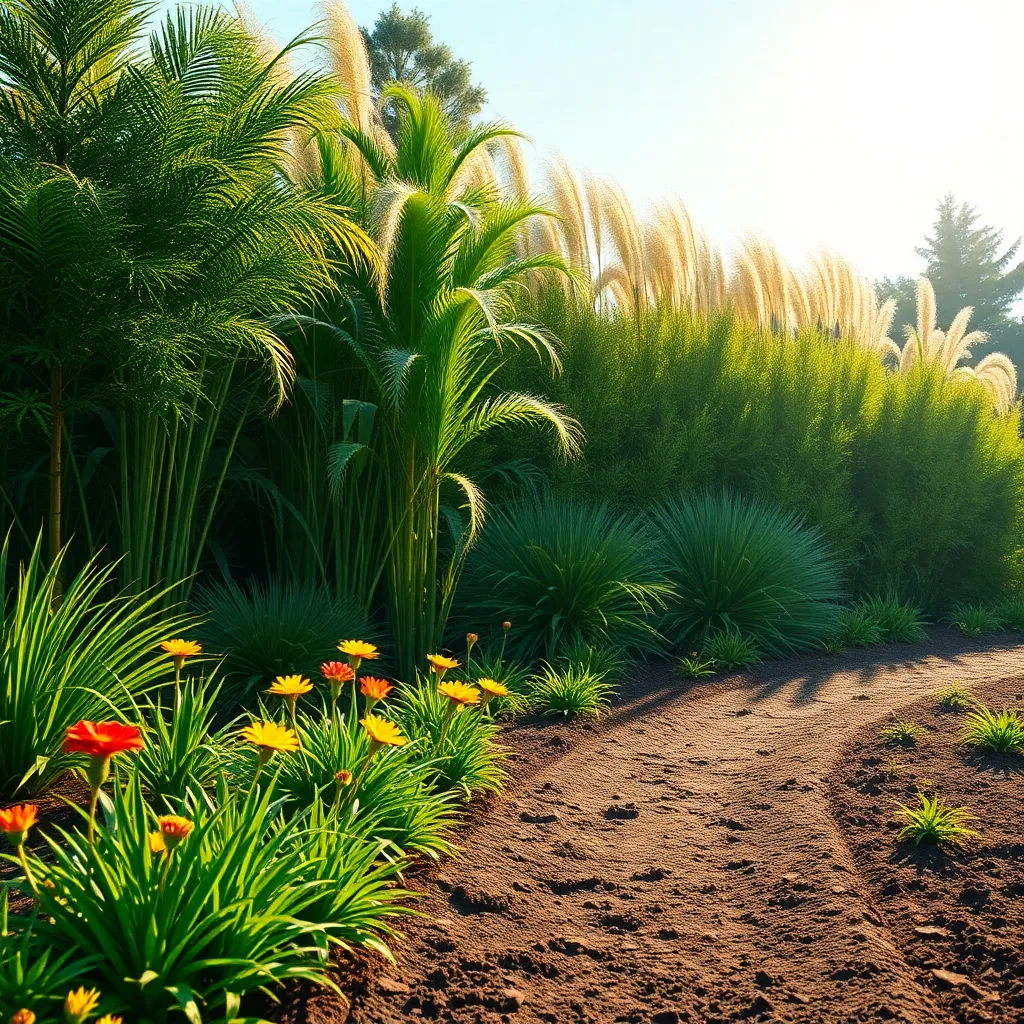
Creating windbreaks is a simple yet effective way to reduce evaporation in your garden. By planting rows of trees or shrubs, you can significantly lower wind speed, which helps to retain moisture in the soil.
Consider using evergreen shrubs like boxwood or juniper, as they provide year-round protection from the wind. Position these plants strategically to shield your garden from prevailing winds, ensuring maximum efficiency.
For those with limited space, constructing a fence or using trellises with climbing plants can also serve as effective windbreaks. Choose climbing plants such as clematis or honeysuckle, which offer the dual benefits of beauty and practicality.
Remember that the height and density of your windbreak will affect its efficiency. A well-designed windbreak that is slightly porous can reduce wind speed significantly while still allowing some airflow, preventing frost damage and promoting healthy plant growth.
Limit Grass Lawn Areas
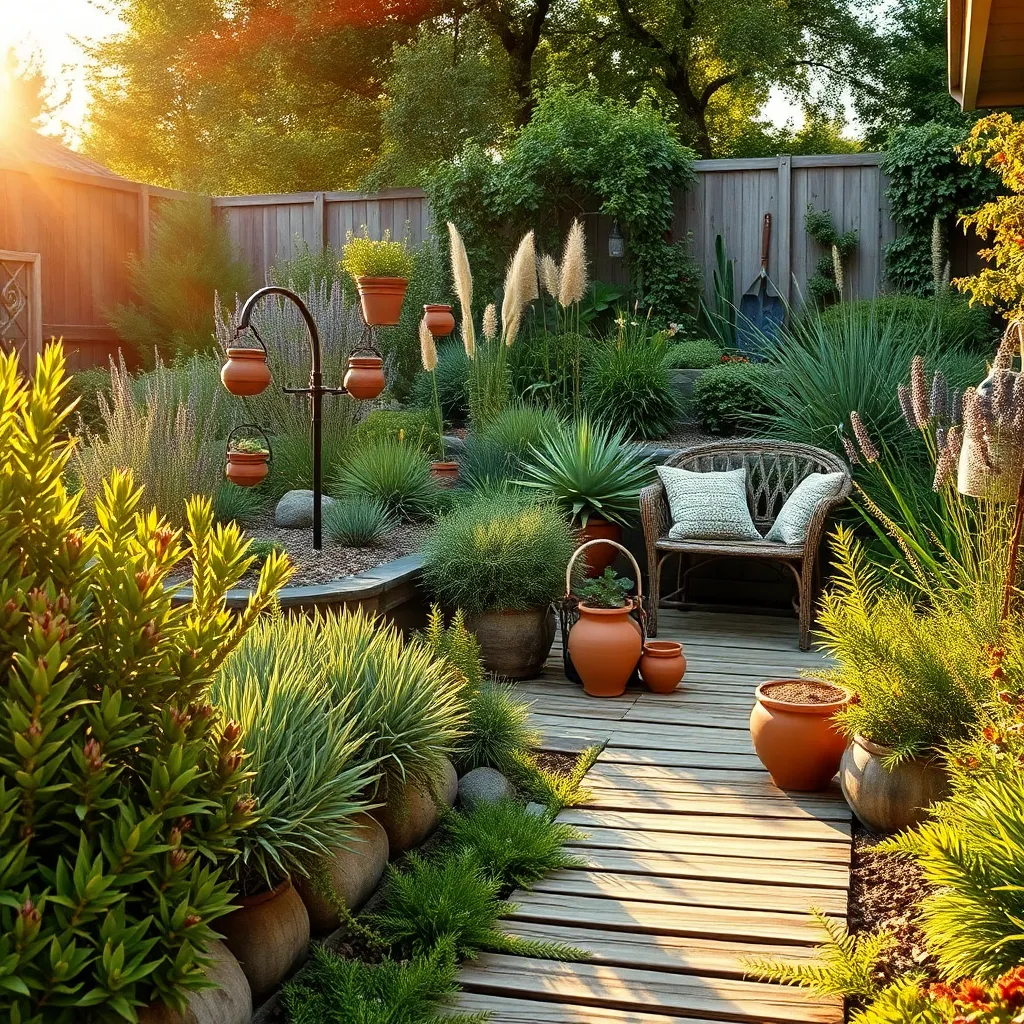
Reducing the size of your grass lawn is a practical step toward conserving water in your garden. Lawns typically require more water than other landscape options, making them a less sustainable choice in areas prone to drought.
Consider replacing sections of your lawn with drought-tolerant plants or ground covers like thyme or clover. These alternatives not only reduce water usage but also add diversity and visual interest to your garden.
Mixing in native plants can be a game-changer, as they are adapted to local climates and require less maintenance. Native species often thrive with minimal watering once established, making them an eco-friendly choice.
For beginners, starting small by converting just a portion of your lawn can make the transition more manageable. Advanced gardeners can experiment with creating a mosaic of textures and colors by using a variety of low-water plants.
Adopt No-Dig Gardening Practices

No-dig gardening is a sustainable practice that can significantly reduce water usage in your garden. By avoiding tilling, you maintain the soil structure, which helps retain moisture and supports healthy plant growth.
Start by laying a thick layer of organic material such as compost or well-rotted manure over your garden beds. This layer acts as a mulch, reducing evaporation and keeping the soil cool, which is ideal for conserving water.
As the organic material breaks down, it enriches the soil, promoting a thriving ecosystem of beneficial microorganisms. These microorganisms enhance soil structure, creating channels that improve water infiltration and retention.
To implement no-dig gardening, select plants that are well-suited for this method, such as root vegetables and leafy greens. Ensure you water deeply but infrequently, encouraging plants to develop deep root systems that access moisture from below the surface.
Implement Soil Moisture Sensors
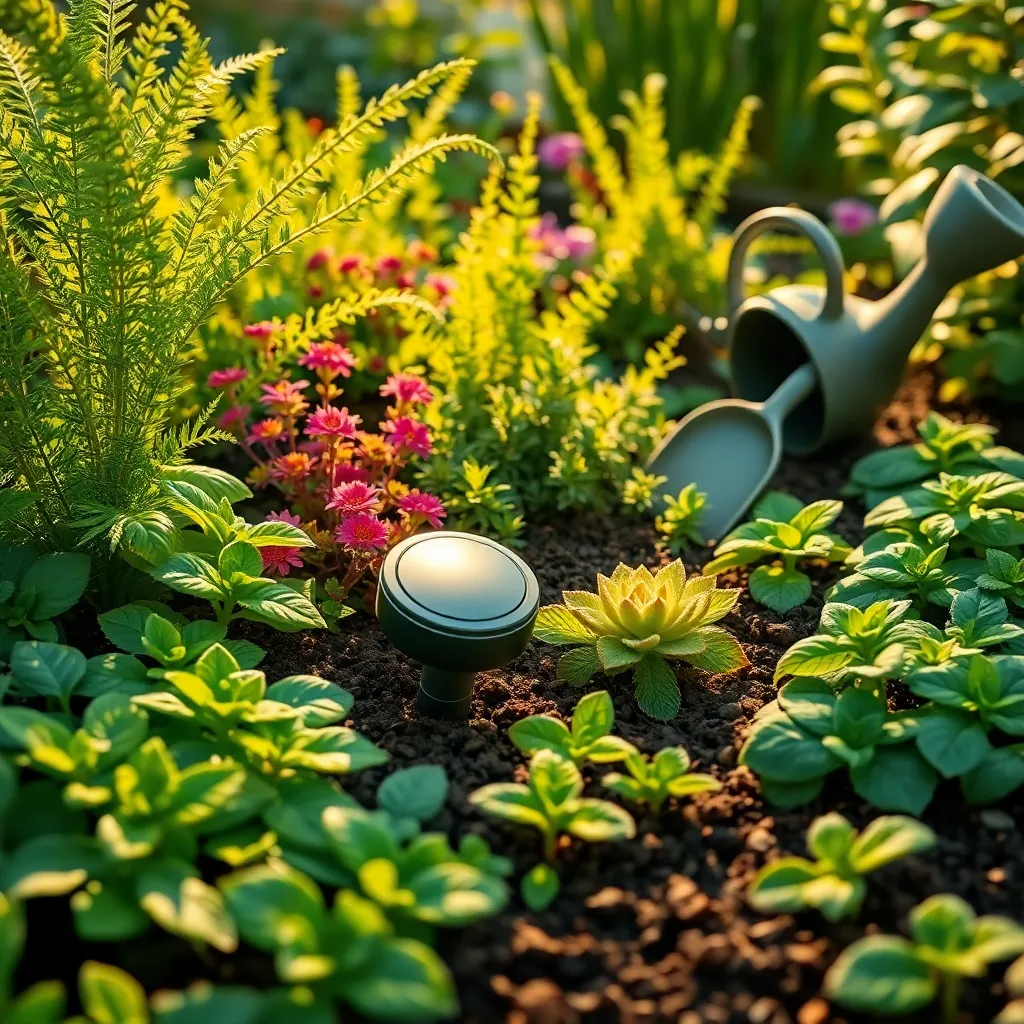
Implementing soil moisture sensors in your garden is a smart way to conserve water and ensure your plants receive the right amount of moisture. These devices help you monitor soil conditions by providing real-time data on moisture levels, allowing you to adjust your watering schedule accordingly.
Installing a soil moisture sensor is straightforward and requires minimal technical skills. Place the sensor at the root level of your plants, as this ensures accurate readings that reflect the moisture available to the plant.
For beginners, start with a basic sensor that connects to a smartphone app, offering user-friendly insights into your garden’s needs. More advanced gardeners might opt for integrated systems that automatically adjust irrigation based on sensor readings, optimizing water use for diverse plant species.
Regularly check the moisture data to determine if adjustments are needed, especially during seasonal changes. This proactive approach not only conserves water but also promotes healthier plant growth by preventing over-watering or drought stress.
Consider the type of soil in your garden, as different soils retain moisture differently. Sandy soils may require more frequent monitoring compared to clay soils, which hold moisture longer, emphasizing the importance of tailored watering strategies based on sensor data.
Conclusion: Growing Success with These Plants
In cultivating a thriving relationship garden, much like nurturing a water-wise garden, balance and intentionality are key. We explored 12 essential concepts: understanding love languages, practicing active listening, prioritizing quality time, setting healthy boundaries, maintaining trust, expressing gratitude, embracing vulnerability, resolving conflicts with empathy, celebrating each other’s successes, fostering shared goals, maintaining individuality, and consistently showing appreciation. Each principle acts as a droplet, collectively ensuring your relationship blossoms with resilience and vitality.
Now, take a moment to reflect on one concept that resonates most with you. Make a small, meaningful gesture today that aligns with this insight—whether it’s a heartfelt note or an uninterrupted hour of connection. This simple action can set the stage for deeper intimacy and understanding.
To keep these insights at your fingertips, bookmark this article. Having these strategies readily available will empower you to revisit and reinforce them as you nurture your relationship. Remember, the journey to relationship success is ongoing, and these foundational principles will support you every step of the way. Embrace each day as an opportunity to grow together, knowing that with intention and care, your relationship can flourish beautifully.

